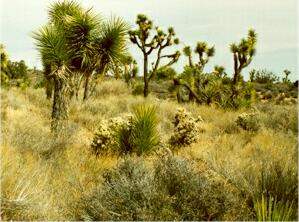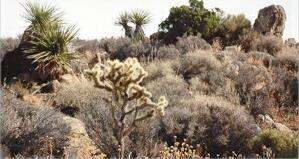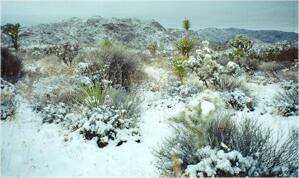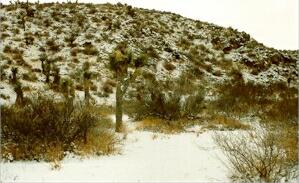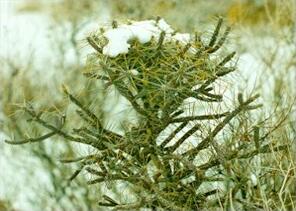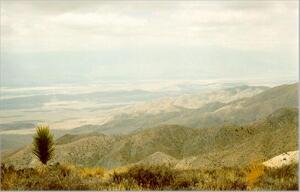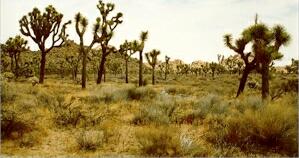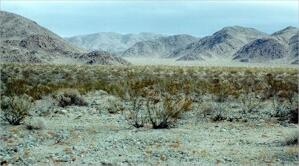MOJAVE DESERT The Mojave Desert is difficult to define in biological terms because it covers a wide range of different vegetation types, elevation and climate. The more northerly sections of this desert resemble the Great Basin Desert, being dominated by low-growing, drought-tolerant shrubs. In contrast, the lower-lying southern sections of the Mojave Desert contain extensive tracts of creosote bush, resembling the Sonoran Desert. In another region of this desert - Death Valley - the vegetation is extremely sparse because of the very hot temperatures and sparse rainfall (average 4.3 cm per year). Yet the Mojave Desert has some distinctive features that make it biologically interesting. This desert is characterised by having several species of Yucca - a genus largely absent from the Great Basin and Sonoran deserts but which also occurs abundantly in the Chihuahuan Desert. One of these yuccas - the Joshua tree - grows to tree-like proportions and its distribution largely defines the boundaries of the Mojave Desert. Other species of Yucca - the blue yucca and majove yucca, which typically grow to less than 2 metres height - are commonly found in desert shrub communities with a range of drought-tolerant flowering shrubs in the higher and more northerly regions of the Mojave Desert
The Mojave Desert also contains several cacti, especially chollas and small cacti, although it does not support the larger columnar cacti typical of parts of the Sonoran Desert. The cacti at the upper elevations of the Mojave Desert need to be frost-tolerant, because this desert receives winter precipitation, which sometimes occurs as snow.
Descending from the higher regions of the Mojave Desert towards the Sonoran Desert, the vegetation changes progressively. Creosote bush becomes more common - either mixed with grasses and low-lying shrubs, or as nearly pure stands.
Joshua trees can still be found at these middle and lower elevations, but in the flatter valleys the vegetation is often dominated by creosote bush. Some of the shallow, sloping hillsides can be dominated by pure stands of teddy-bear cholla, which propagate vegetatively, when the stem segments fall to the ground and take root, as shown in the images below. One other important feature of the Majoave Desert is the large number of spring annuals, which appear quickly after the winter rains and carpet the desert floor following their flowers. There are about 250 different spring annuals in the Mojave Desert, and about 80% of these are endemic - unique to this desert region. This contrasts with the Great Basin Desert, where there are few spring annuals. |
||||||||||||||

